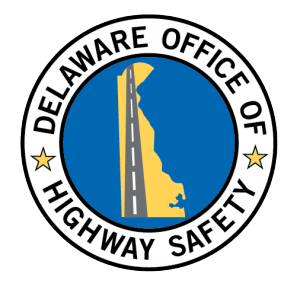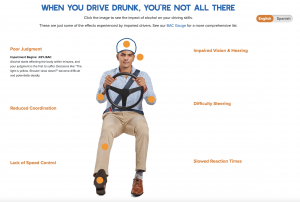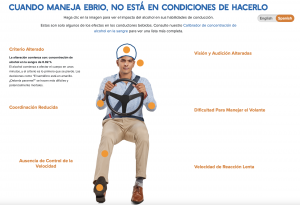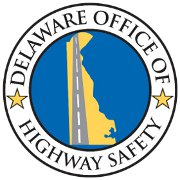The annual Safe Family Holiday campaign seeks to prevent the holidays from “getting ugly” by helping Delawareans avoid dangerous driver, passenger, and pedestrian behaviors.
DOVER, Del. (Nov. 17, 2022) — Starting on Nov. 18, the Delaware Office of Highway Safety (OHS) will begin its annual holiday safety campaign, designed to reduce crashes, injuries, and deaths on Delaware roadways during a time of year that consistently ranks as one of the most dangerous for the traveling public.
The campaign will run through Dec. 31 utilizing high visibility enforcement in conjunction with an integrated, multifaceted communications strategy to reach high-risk audiences. To add to the credibility of the messaging and ensure it reaches the right audiences in the right places, OHS has partnered with businesses and organizations — including bars and restaurants, faith-based organizations, and holiday markets.
“Our Safe Family Holiday campaign focuses on ensuring safe driving habits and encourages Delawareans to make responsible choices,” said Kimberly Chesser, Director of the Delaware Office of Highway Safety “people tend to get wrapped up in celebrations and activities during the holidays and relax their safe driving behaviors. Drivers are reminded of poor winter weather conditions, increased holiday traffic, and more pedestrian activity, meaning more dangerous conditions that require your full attention behind the wheel.”
The OHS Safe Family Holiday campaign addresses the leading causes of holiday crashes in Delaware: driving under the influence, speeding, distracted driving, and pedestrian safety. In addition to the support of business and community partners, who will help display and distribute traffic safety messaging, OHS will connect with Delawareans statewide through a mix of paid advertising, social media, public relations, and grassroots engagements at multiple community events.
As an added approach to make an immediate connection with messaging and the holiday season, OHS has creatively leveraged the ubiquity of the ugly holiday sweater, urging people throughout the state to “prevent the holidays from getting ugly” by taking all the steps necessary to avoid a crash.
Here are a few key points OHS would like everyone to remember before making driving decisions this season:
- If you’re planning a night out that includes drinking, make sure you plan for a sober ride home. Use a rideshare service, or public transportation, or call a friend or family member to get you home safely.
- With worsening road conditions this time of year, it’s extremely important to avoid distractions while driving. Put down your phone, always buckle up, and focus on the road ahead.
- You may be itching to get home for the holidays, but so is everyone else. Slow down and follow posted speed limits before things get ugly.
- If you choose to walk home from celebrations, wear bright or reflective clothing and/or items to make yourself as visible as possible. Additionally, motorists need to be aware of increased pedestrian activity as visibility may be impaired due to hazardous weather and shorter daylight hours during the winter months.
Statistics
Each holiday, the OHS campaign focuses on the following pillars of awareness and behavioral change:
- Impaired driving: Last year (Nov. 21, to Dec. 31, 2021), there were 3 crash-related deaths due to impaired driving/DUI and 476 arrests.
- Speeding: In 2021, speed was involved in 43 vehicle fatalities, accounting for approximately 32% of all traffic fatalities.
- Pedestrian safety: In 2021, 29 pedestrians were killed in traffic crashes.
- Seat belt neglect: While seat belt use is at an all-time high in Delaware, currently 36% of crash deaths occur when a vehicle occupant is not restrained — a 21% increase from 2021.
- Distracted driving: A person who texts while driving is three times more likely to cause a crash than a driver under the influence of alcohol. Approximately 25% of Delaware’s crashes can be attributed at least in part to distracted driving.
Community Engagements — OHS Safety Snowman and Zoey Glowey Appearances
In addition to the communications tactics listed above, the OHS “Safety Snowman” and “Zoey Glowey” will appear at the following holiday events in support of the campaign:
- Dover Motor Speedway Gift of Lights, Dover, DE. 5, from 4:30 to 9 p.m.
- Santa’s Secret Shop at George Wilson Community Center, Newark, DE. 3, from 9 a.m. to noon.
- New Castle County Hope Center, New Castle, DE. 15, from 4 to 6 p.m.
- Schellville 2022 Enchanted Winter Celebration, Rehoboth Beach, DE. 18, from 5 to 9 p.m.
About the Delaware Office of Highway Safety
The Office of Highway Safety (OHS) is committed to improving the safety of Delaware’s motoring public by focusing on behavioral traffic safety issues, such as impaired driving, seat belt use, speeding, child passenger safety, pedestrian and bicycle safety, motorcycle safety, and teen driving issues. FAQs can be found at ArriveAliveDE.com. Follow OHS on the Delaware Office of Highway Safety website, Facebook, Twitter, Instagram, and TikTok.
Media Contact: jason.coleman@delaware.gov




 About the Delaware Office of Highway Safety
About the Delaware Office of Highway Safety